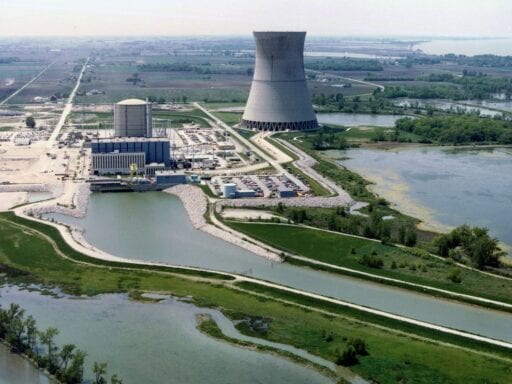It’s all about the microreactors.
On the latest episode of The Weeds podcast, I sat down with Jessica Lovering, a fellow with the Energy for Growth Hub and formerly the director of energy at the Breakthrough Institute to talk about the role of nuclear power in a world concerned with climate change.
This conversation often takes place at a superficial culture war level in which environmentalists don’t want to embrace nuclear power and nuclear advocates want to scold environmentalists or accuse them of virtue-signaling. I wanted to understand what’s at stake in this argument in concrete policy terms, which is of course complicated — it’s literally nuclear physics.
But I think it’s possible to distill her ideas into a few key takeaways.
- Nuclear power provides about 10 percent of the world’s electricity and despite the growth of renewable power in recent years continues to be the world’s largest source of zero-carbon electricity.
- Since virtually every plan to reduce greenhouse gas emissions is relying on large-scale electrification of things like surface transportation and home heating, rich countries need to replace more than 100 percent of their current coal-, oil-, and gas-fired electricity generation to achieve a zero-carbon economy. Poor countries, meanwhile, are going to want to continue to develop economically and significantly increase the total amount of electricity they make and consume.
- The biggest problem with nuclear power is not safety but financial cost, specifically the huge up-front expenses associated with building safe reactors. Better regulatory policy could make it easier to reuse the same reactor designs (as in South Korea), but a promising nuclear future is based on innovation and new reactor designs.
- At the current margin, new renewable electricity is cheaper than new nuclear electricity. But as renewables grow and grow that cost calculus will shift, because questions about storage and land consumption will become more important the more we rely on renewable energy. The long-term case for nuclear is, like hydropower, as a complement to renewables that allows us to keep adding solar and wind without needing to fully solve problems related to the intermittency of renewable sources.
- The most promising new idea in nuclear is “microreactors” that would generate about 10 megawatts thermal (MWth) and be small enough to build in a factory and ship on a truck, rather than the current 1,000 MWth light water reactors that need to be built on sight. Because they don’t require custom installation, 100 microreactors could be built more cheaply than a single conventional size reactor. And because the reactors are smaller, they don’t need the elaborate set of pumps for cooling that create potential failures points in traditional reactors.
- Microreactor technology is too new and expensive right now to be deployed on a wide scale, but it could be useful in a number of edge cases. Today, there are island communities and small Arctic towns separated from the grid who need to rely on expensive and extremely dirty diesel generators for power. Similarly, institutions like universities or large hospital complexes could use microreactors as an alternative to their current backup generators. These use cases could be a proving ground for microreactors that might then be more widely deployed as manufacturers learn by doing.
- Nuclear needs two big policy changes to succeed. One is that climate-focused regulations should require utilities to obtain power from zero-carbon sources, while remaining agnostic about what kind of source that is.
That’s less favorable to the wind and solar industry than existing renewable energy mandators, but you can make it up to them by making the overall target more aggressive. The other is that we need a licensing pathway within the Nuclear Regulatory Commission whereby a microreactor design and factory could be certified as safe — similar to how the FAA certifies airplane designs — rather than requiring each individual reactor to be separately assessed, a process designed with enormous custom-built structures in mind.
Author: Matthew Yglesias
Read More



